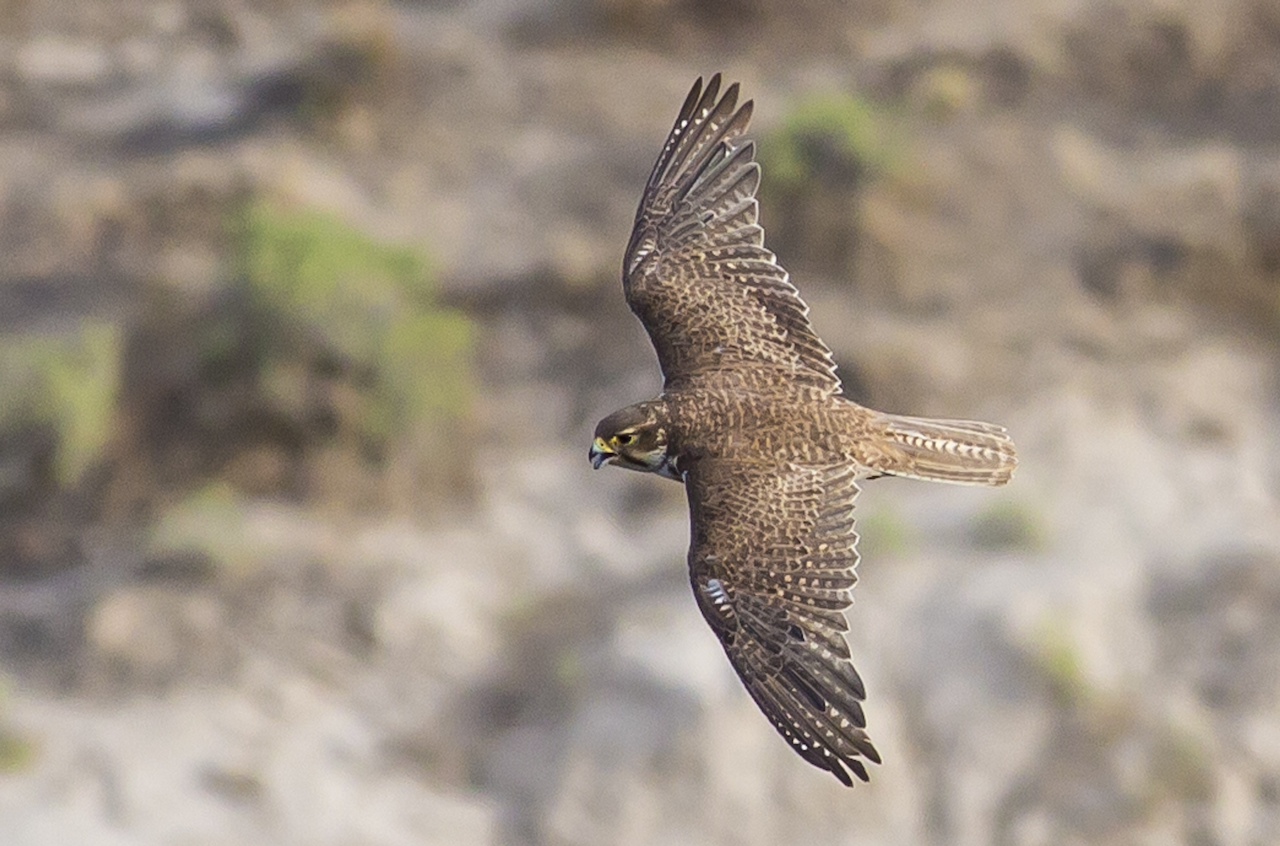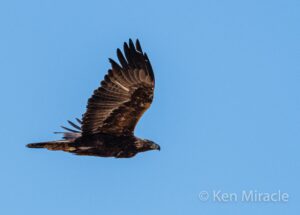Idahoans speak out for raptors: 600+ chime in on behalf of the Morley Nelson Snake River Birds of Prey National Conservation Area
For decades, Idahoans have been thrilled by the sights and sounds of raptors soaring over the canyons of Idaho’s only National Conservation Area (NCA). Just a month ago, comments closed on the Morley Nelson Snake River Birds of Prey National Conservation Area South Travel Management Plan. Designated in 1993 to protect the largest and densest population of breeding birds of prey in the United States, the Morley Nelson Snake River Birds of Prey NCA is designated, first and foremost, to conserve raptor populations and the habitat they need to survive. The Morley Nelson Snake River Birds of Prey National Conservation Area in southern Idaho is not a geographical name on a map. It is a magnificent ecosystem of raptors protected by Congress. Larry LaRocco, former US Congressman. The BLM asked the public to share their thoughts on three alternative plans, including one proposed plan that would allow motorized routes at densities that would entirely jeopardize the conservation goals of the NCA. ICL advocated for a blend of two other alternatives, which would prioritize the protection of raptors while securing public access for recreationists to enjoy motorized and non-motorized routes consistent with the NCA’s Conservation Mandate. Notoriously flighty (pun intended) and fickle, raptors are quick to abandon their nests under stress from human disturbances. Unfortunately, some irresponsible motorized recreationists have been lobbying the BLM to adopt hundreds of miles of illegally pioneered routes in sensitive habitat. Considering the 700+ pairs of prairie falcons, eagles, hawks, and owls who don’t take happily to human intrusion, it was of utmost importance that the BLM hear the public’s thoughts on how to proceed. Just like back in 1993 when Idahoans from all walks came together to protect raptors by designating the NCA, Idahoans spoke up loud and clear again...And over 600 Idahoans told the BLM to proceed with raptors in mind!Biologists and recreationists, researchers and bird watchers alike all chimed in to express their support for a travel management plan that protects birds, their prey, and their habitat, and supports sustainable recreation so Idahoans can enjoy the values that make the NCA so special.  From experts—The Snake River Birds of Prey National Conservation Area supports important habitat for Golden Eagles – as well as prairie falcons, bald eagles and burrowing owls. Alternatives B and C of the Travel Management Plan do the best job of protecting these and other raptors during nesting when these birds are most vulnerable while allowing recreationists to enjoy the area. I have spent a lot of time in this area while working for The Nature Conservancy and believe this area needs to be protected as much as possible for raptor conservation - especially as farmlands continue to be developed in this area, along the Snake River and throughout the state. Louise Stumph, advocate.A ground-view of the area the BLM is evaluating for recreational trails in this Travel Management Plan shows that there are many user-created trails, multiple areas of unauthorized hill-climbing activity, and a spider-web of two-tracks and single tracks – all of which might be described as unauthorized chaos. A well thought-out system of recreation trails can complement the habitat improvements, trail closures, etc., and everyone should be happy with the result. The BLM has the expertise and know-how to restore native habitat in the shrub-steppe ecotype. Enabling legislation made it clear that the management priority for the area should be for the benefit of birds of prey. Steve Stuebner, author of “Cool North Wind,” a biography of Morley Nelson.
From experts—The Snake River Birds of Prey National Conservation Area supports important habitat for Golden Eagles – as well as prairie falcons, bald eagles and burrowing owls. Alternatives B and C of the Travel Management Plan do the best job of protecting these and other raptors during nesting when these birds are most vulnerable while allowing recreationists to enjoy the area. I have spent a lot of time in this area while working for The Nature Conservancy and believe this area needs to be protected as much as possible for raptor conservation - especially as farmlands continue to be developed in this area, along the Snake River and throughout the state. Louise Stumph, advocate.A ground-view of the area the BLM is evaluating for recreational trails in this Travel Management Plan shows that there are many user-created trails, multiple areas of unauthorized hill-climbing activity, and a spider-web of two-tracks and single tracks – all of which might be described as unauthorized chaos. A well thought-out system of recreation trails can complement the habitat improvements, trail closures, etc., and everyone should be happy with the result. The BLM has the expertise and know-how to restore native habitat in the shrub-steppe ecotype. Enabling legislation made it clear that the management priority for the area should be for the benefit of birds of prey. Steve Stuebner, author of “Cool North Wind,” a biography of Morley Nelson. To recreationists and enthusiasts—
To recreationists and enthusiasts— Please keep this area protected. I have been visiting the Birds of Prey National Conservation Area since (and before) its creation and it is a fantastic area worth preserving… Just look to south of the Birds of Prey and along its boundaries: the country has been torn up by ORVs. At the same time, the population of the area continues to boom so this area will only attract additional visitation, so it is vital to keep it as protected as possible. Undisturbed areas for birds of prey are disappearing quickly in Idaho, in the United States and worldwide—which, if protected, will only make the Birds of Prey National Conservation Area more important… Andrew Taylor, advocate. I am an ORV user who is 66 years old. I enjoy getting outside, and I sometimes use my ORV on appropriately designated trails. I expect that, as I get older and less mobile, I will come to depend on my ORV even more. However, I am concerned that too much ORV use in critical areas that raptors rely on would be a mistake. There are lots of ORV trails to enjoy in southwest Idaho, but the Snake River Birds of Prey National Conservation Area is special and should be protected. This landscape supports the largest concentration of nesting raptors in the United States, and too much motorized use can cause raptors to abandon their nests and fragment their habitat. Alternatives B and C of the NCA South Travel Management Plan do the best job of protecting raptors and the experiences of everyone who thrills at their flights in the canyon. Thanks for taking my views into consideration. David Garman, advocate.—ICL is delighted and inspired to see so many Idahoans speak up for the Snake River Birds of Prey NCA. While the BLM still has yet to release its official decision, there’s reason to pause and appreciate the 600+ advocates who asked the BLM to take their views into consideration. But the work isn’t done yet. There are two more travel plans to be completed. The BLM has moved on to the next Travel Management Plan in the Owyhees, the 425,000-acre Silver City Travel Planning Area. This landscape is named for the historic mining town of Silver City, but starts at the Owyhee Front, spans from Jump Creek to the North Fork Owyhee Wilderness and from the Owyhee Uplands Backcountry Scenic Byway (aka the Mud Flat Road) to the Oregon border.Roads and motorized trails are parts of a public lands adventure, but too many trails in the wrong places can ruin the solitude and wildlife habitat that makes this place special. Nesting golden eagles are particularly sensitive to human disturbance. Studies found that with just 3% increase in recreation per year, Golden Eagles could be locally extinct within 50 years, and there is a 100% chance of local extinction within 100 years at this rate of increase.If you spoke up for the Morley Nelson Snake River Birds of Prey National Conservation Area, please consider contributing your voice for the Owyhee Canyonlands once again. If you missed your opportunity last time, but still want to make a difference, now’s your chance. Take action and comment on the Silver City Travel Planning Area today and sign up here to be alerted when the next Owyhee Travel Plan comes out!
Please keep this area protected. I have been visiting the Birds of Prey National Conservation Area since (and before) its creation and it is a fantastic area worth preserving… Just look to south of the Birds of Prey and along its boundaries: the country has been torn up by ORVs. At the same time, the population of the area continues to boom so this area will only attract additional visitation, so it is vital to keep it as protected as possible. Undisturbed areas for birds of prey are disappearing quickly in Idaho, in the United States and worldwide—which, if protected, will only make the Birds of Prey National Conservation Area more important… Andrew Taylor, advocate. I am an ORV user who is 66 years old. I enjoy getting outside, and I sometimes use my ORV on appropriately designated trails. I expect that, as I get older and less mobile, I will come to depend on my ORV even more. However, I am concerned that too much ORV use in critical areas that raptors rely on would be a mistake. There are lots of ORV trails to enjoy in southwest Idaho, but the Snake River Birds of Prey National Conservation Area is special and should be protected. This landscape supports the largest concentration of nesting raptors in the United States, and too much motorized use can cause raptors to abandon their nests and fragment their habitat. Alternatives B and C of the NCA South Travel Management Plan do the best job of protecting raptors and the experiences of everyone who thrills at their flights in the canyon. Thanks for taking my views into consideration. David Garman, advocate.—ICL is delighted and inspired to see so many Idahoans speak up for the Snake River Birds of Prey NCA. While the BLM still has yet to release its official decision, there’s reason to pause and appreciate the 600+ advocates who asked the BLM to take their views into consideration. But the work isn’t done yet. There are two more travel plans to be completed. The BLM has moved on to the next Travel Management Plan in the Owyhees, the 425,000-acre Silver City Travel Planning Area. This landscape is named for the historic mining town of Silver City, but starts at the Owyhee Front, spans from Jump Creek to the North Fork Owyhee Wilderness and from the Owyhee Uplands Backcountry Scenic Byway (aka the Mud Flat Road) to the Oregon border.Roads and motorized trails are parts of a public lands adventure, but too many trails in the wrong places can ruin the solitude and wildlife habitat that makes this place special. Nesting golden eagles are particularly sensitive to human disturbance. Studies found that with just 3% increase in recreation per year, Golden Eagles could be locally extinct within 50 years, and there is a 100% chance of local extinction within 100 years at this rate of increase.If you spoke up for the Morley Nelson Snake River Birds of Prey National Conservation Area, please consider contributing your voice for the Owyhee Canyonlands once again. If you missed your opportunity last time, but still want to make a difference, now’s your chance. Take action and comment on the Silver City Travel Planning Area today and sign up here to be alerted when the next Owyhee Travel Plan comes out!

